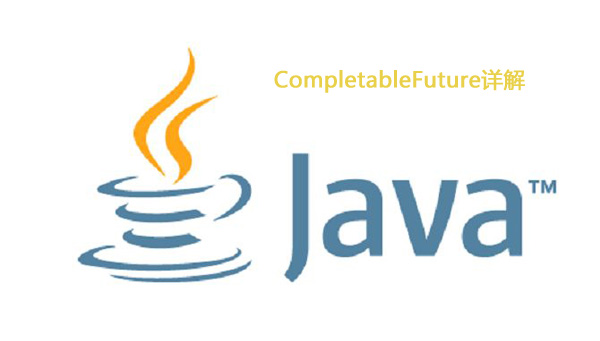在Java 8中, 新增加了一个包含50个方法左右的类: CompletableFuture,默认依靠fork/join框架启动新的线程实现异步与并发的,提供了非常强大的Future的扩展功能,可以帮助我们简化异步编程的复杂性,提供了函数式编程的能力,可以通过回调的方式处理计算结果,并且提供了转换和组合CompletableFuture的方法。
CompletableFuture类实现了CompletionStage和Future接口,所以可以像以前一样通过阻塞或者轮询的方式获得结果,尽管这种方式不推荐使用。
创建CompletableFuture对象。
以下四个静态方法用来为一段异步执行的代码创建CompletableFuture对象:
- public static CompletableFuture<Void> runAsync(Runnable runnable)
- public static CompletableFuture<Void> runAsync(Runnable runnable, Executor executor)
- public static <U> CompletableFuture<U> supplyAsync(Supplier<U> supplier)
- public static <U> CompletableFuture<U> supplyAsync(Supplier<U> supplier, Executor executor)
runAsync方法也好理解,它以Runnable函数式接口类型为参数,所以CompletableFuture的计算结果为空。以Async结尾会使用其它的线程去执行,没有指定Executor的方法会使用ForkJoinPool.commonPool()作为它的线程池执行异步代码。
supplyAsync方法以Supplier<U>函数式接口类型为参数,CompletableFuture的计算结果类型为U。
因为方法的参数类型都是函数式接口,所以可以使用lambda表达式实现异步任务,比如:
- CompletableFuture<String> future = CompletableFuture.supplyAsync(() -> {
- //长时间的计算任务
- return "hello world";
- });
计算结果完成时的处理
当CompletableFuture的计算结果完成,或者抛出异常的时候,我们可以执行特定的Action。主要是下面的方法:
- public CompletableFuture<T> whenComplete(BiConsumer<? super T,? super Throwable> action)
- public CompletableFuture<T> whenCompleteAsync(BiConsumer<? super T,? super Throwable> action)
- public CompletableFuture<T> whenCompleteAsync(BiConsumer<? super T,? super Throwable> action, Executor executor)
- public CompletableFuture<T> exceptionally(Function<Throwable,? extends T> fn)
可以看到Action的类型是BiConsumer<? super T,? super Throwable>,它可以处理正常的计算结果,或者异常情况。
注意这几个方法都会返回CompletableFuture,当Action执行完毕后它的结果返回原始的CompletableFuture的计算结果或者返回异常。
- public class Main {
- private static Random rand = new Random();
- private static long t = System.currentTimeMillis();
- static int getMoreData() {
- System.out.println("begin to start compute");
- try {
- Thread.sleep(10000);
- } catch (InterruptedException e) {
- throw new RuntimeException(e);
- }
- System.out.println("end to start compute. passed " + (System.currentTimeMillis() - t)/1000 + " seconds");
- return rand.nextInt(1000);
- }
- public static void main(String[] args) throws Exception {
- CompletableFuture<Integer> future = CompletableFuture.supplyAsync(Main::getMoreData);
- Future<Integer> f = future.whenComplete((v, e) -> {
- System.out.println(v);
- System.out.println(e);
- });
- System.out.println(f.get());
- System.in.read();
- }
- }
exceptionally方法返回一个新的CompletableFuture,当原始的CompletableFuture抛出异常的时候,就会触发这个CompletableFuture的计算,调用function计算值,否则如果原始的CompletableFuture正常计算完后,这个新的CompletableFuture也计算完成,它的值和原始的CompletableFuture的计算的值相同。也就是这个exceptionally方法用来处理异常的情况。
结果转换
由于回调风格的实现,我们不必因为等待一个计算完成而阻塞着调用线程,而是告诉CompletableFuture当计算完成的时候请执行某个function。而且我们还可以将这些操作串联起来,或者将CompletableFuture组合起来。
- public <U> CompletableFuture<U> thenApply(Function<? super T,? extends U> fn)
- public <U> CompletableFuture<U> thenApplyAsync(Function<? super T,? extends U> fn)
- public <U> CompletableFuture<U> thenApplyAsync(Function<? super T,? extends U> fn, Executor executor)
这一组函数的功能是当原来的CompletableFuture计算完后,将结果传递给函数fn,将fn的结果作为新的CompletableFuture计算结果。因此它的功能相当于将CompletableFuture<T>转换成CompletableFuture<U>。
使用例子如下:
- CompletableFuture<Integer> future = CompletableFuture.supplyAsync(() -> {
- return 100;
- });
- CompletableFuture<String> f = future.thenApplyAsync(i -> i * 10).thenApply(i -> i.toString());
- System.out.println(f.get()); //"1000"
需要注意的是,这些转换并不是马上执行的,也不会阻塞,而是在前一个stage完成后继续执行。
下面一组方法虽然也返回CompletableFuture对象,但是对象的值和原来的CompletableFuture计算的值不同。当原先的CompletableFuture的值计算完成或者抛出异常的时候,会触发这个CompletableFuture对象的计算,结果由BiFunction参数计算而得。因此这组方法兼有whenComplete和转换的两个功能。
- public <U> CompletableFuture<U> handle(BiFunction<? super T,Throwable,? extends U> fn)
- public <U> CompletableFuture<U> handleAsync(BiFunction<? super T,Throwable,? extends U> fn)
- public <U> CompletableFuture<U> handleAsync(BiFunction<? super T,Throwable,? extends U> fn, Executor executor)
它们与thenApply* 方法的区别在于handle*方法会处理正常计算值和异常,因此它可以屏蔽异常,避免异常继续抛出。而thenApply*方法只是用来处理正常值,因此一旦有异常就会抛出。
纯消费结果
上面的方法是当计算完成的时候,会生成新的计算结果(thenApply, handle),或者返回同样的计算结果(whenComplete,CompletableFuture)。CompletableFuture提供了一种处理结果的方法,只对结果执行Action,而不返回新的计算值,因此计算值为Void:
- public CompletableFuture<Void> thenAccept(Consumer<? super T> action)
- public CompletableFuture<Void> thenAcceptAsync(Consumer<? super T> action)
- public CompletableFuture<Void> thenAcceptAsync(Consumer<? super T> action, Executor executor)
看它的参数类型也就明白了,它们是消费型函数式接口Consumer,这个接口只有输入,没有返回值。
- CompletableFuture<Integer> future = CompletableFuture.supplyAsync(() -> {
- return 100;
- });
- CompletableFuture<Void> f = future.thenAccept(System.out::println);
- System.out.println(f.get());
- public <U> CompletableFuture<Void> thenAcceptBoth(CompletionStage<? extends U> other, BiConsumer<? super T,? super U> action)
- public <U> CompletableFuture<Void> thenAcceptBothAsync(CompletionStage<? extends U> other, BiConsumer<? super T,? super U> action)
- public <U> CompletableFuture<Void> thenAcceptBothAsync(CompletionStage<? extends U> other, BiConsumer<? super T,? super U> action, Executor executor)
- public CompletableFuture<Void> runAfterBoth(CompletionStage<?> other, Runnable action)
thenAcceptBoth以及相关方法提供了类似的功能,当两个CompletionStage都正常完成计算的时候,就会执行提供的action,它用来组合另外一个异步的结果。
runAfterBoth是当两个CompletionStage都正常完成计算的时候,执行一个Runnable,这个Runnable并不使用计算的结果。
例子如下:
- CompletableFuture<Integer> future = CompletableFuture.supplyAsync(() -> {
- return 100;
- });
- CompletableFuture<Void> f = future.thenAcceptBoth(CompletableFuture.completedFuture(10), (x, y) -> System.out.println(x * y));
- System.out.println(f.get());
更彻底地,下面一组方法当计算完成的时候会执行一个Runnable,与thenAccept不同,Runnable并不使用CompletableFuture计算的结果。
- public CompletableFuture<Void> thenRun(Runnable action)
- public CompletableFuture<Void> thenRunAsync(Runnable action)
- public CompletableFuture<Void> thenRunAsync(Runnable action, Executor executor)
因此先前的CompletableFuture计算的结果被忽略了,这个方法返回CompletableFuture<Void>类型的对象。
- CompletableFuture<Integer> future = CompletableFuture.supplyAsync(() -> {
- return 100;
- });
- CompletableFuture<Void> f = future.thenRun(() -> System.out.println("finished"));
- System.out.println(f.get());
因此,你可以根据方法的参数的类型来加速你的记忆。Runnable类型的参数会忽略计算的结果,Consumer是纯消费计算结果,BiConsumer会组合另外一个CompletionStage纯消费,Function会对计算结果做转换,BiFunction会组合另外一个CompletionStage的计算结果做转换。
组合
有时,你需要在一个future结构运行某个函数,但是这个函数也是返回某种future,也就是说是两个future彼此依赖串联在一起,它类似于flatMap。
- public <U> CompletableFuture<U> thenCompose(Function<? super T,? extends CompletionStage<U>> fn)
- public <U> CompletableFuture<U> thenComposeAsync(Function<? super T,? extends CompletionStage<U>> fn)
- public <U> CompletableFuture<U> thenComposeAsync(Function<? super T,? extends CompletionStage<U>> fn, Executor executor)
这一组方法接受一个Function作为参数,这个Function的输入是当前的CompletableFuture的计算值,返回结果将是一个新的CompletableFuture,这个新的CompletableFuture会组合原来的CompletableFuture和函数返回的CompletableFuture。因此它的功能类似:
A +--> B +---> C
记住,thenCompose返回的对象并不一是函数fn返回的对象,如果原来的CompletableFuture还没有计算出来,它就会生成一个新的组合后的CompletableFuture。
例子:
- CompletableFuture<Integer> future = CompletableFuture.supplyAsync(() -> {
- return 100;
- });
- CompletableFuture<String> f = future.thenCompose( i -> {
- return CompletableFuture.supplyAsync(() -> {
- return (i * 10) + "";
- });
- });
- System.out.println(f.get()); //1000
而下面的一组方法thenCombine用来复合另外一个CompletionStage的结果。它的功能类似:
A +
|
+------> C
+------^
B +
两个CompletionStage是并行执行的,它们之间并没有先后依赖顺序,other并不会等待先前的CompletableFuture执行完毕后再执行。
- public <U,V> CompletableFuture<V> thenCombine(CompletionStage<? extends U> other, BiFunction<? super T,? super U,? extends V> fn)
- public <U,V> CompletableFuture<V> thenCombineAsync(CompletionStage<? extends U> other, BiFunction<? super T,? super U,? extends V> fn)
- public <U,V> CompletableFuture<V> thenCombineAsync(CompletionStage<? extends U> other, BiFunction<? super T,? super U,? extends V> fn, Executor executor)
其实从功能上来讲,它们的功能更类似thenAcceptBoth,只不过thenAcceptBoth是纯消费,它的函数参数没有返回值,而thenCombine的函数参数fn有返回值。
- CompletableFuture<Integer> future = CompletableFuture.supplyAsync(() -> {
- return 100;
- });
- CompletableFuture<String> future2 = CompletableFuture.supplyAsync(() -> {
- return "abc";
- });
- CompletableFuture<String> f = future.thenCombine(future2, (x,y) -> y + "-" + x);
- System.out.println(f.get()); //abc-100
Either
thenAcceptBoth和runAfterBoth是当两个CompletableFuture都计算完成,而我们下面要了解的方法是当任意一个CompletableFuture计算完成的时候就会执行。
- public CompletableFuture<Void> acceptEither(CompletionStage<? extends T> other, Consumer<? super T> action)
- public CompletableFuture<Void> acceptEitherAsync(CompletionStage<? extends T> other, Consumer<? super T> action)
- public CompletableFuture<Void> acceptEitherAsync(CompletionStage<? extends T> other, Consumer<? super T> action, Executor executor)
- public <U> CompletableFuture<U> applyToEither(CompletionStage<? extends T> other, Function<? super T,U> fn)
- public <U> CompletableFuture<U> applyToEitherAsync(CompletionStage<? extends T> other, Function<? super T,U> fn)
- public <U> CompletableFuture<U> applyToEitherAsync(CompletionStage<? extends T> other, Function<? super T,U> fn, Executor executor)
acceptEither方法是当任意一个CompletionStage完成的时候,action这个消费者就会被执行。这个方法返回CompletableFuture<Void>
applyToEither方法是当任意一个CompletionStage完成的时候,fn会被执行,它的返回值会当作新的CompletableFuture<U>的计算结果。
下面这个例子有时会输出100,有时候会输出200,哪个Future先完成就会根据它的结果计算。
- Random rand = new Random();
- CompletableFuture<Integer> future = CompletableFuture.supplyAsync(() -> {
- try {
- Thread.sleep(10000 + rand.nextInt(1000));
- } catch (InterruptedException e) {
- e.printStackTrace();
- }
- return 100;
- });
- CompletableFuture<Integer> future2 = CompletableFuture.supplyAsync(() -> {
- try {
- Thread.sleep(10000 + rand.nextInt(1000));
- } catch (InterruptedException e) {
- e.printStackTrace();
- }
- return 200;
- });
- CompletableFuture<String> f = future.applyToEither(future2,i -> i.toString());
辅助方法 allOf 和 anyOf
前面我们已经介绍了几个静态方法:completedFuture、runAsync、supplyAsync,下面介绍的这两个方法用来组合多个CompletableFuture。
- public static CompletableFuture<Void> allOf(CompletableFuture<?>... cfs)
- public static CompletableFuture<Object> anyOf(CompletableFuture<?>... cfs)
allOf方法是当所有的CompletableFuture都执行完后执行计算。
anyOf方法是当任意一个CompletableFuture执行完后就会执行计算,计算的结果相同。
下面的代码运行结果有时是100,有时是"abc"。但是anyOf和applyToEither不同。anyOf接受任意多的CompletableFuture,但是applyToEither只是判断两个CompletableFuture。anyOf返回值的计算结果是参数中其中一个CompletableFuture的计算结果,applyToEither返回值的计算结果却是要经过fn处理的。当然还有静态方法的区别,线程池的选择等。
- Random rand = new Random();
- CompletableFuture<Integer> future1 = CompletableFuture.supplyAsync(() -> {
- try {
- Thread.sleep(10000 + rand.nextInt(1000));
- } catch (InterruptedException e) {
- e.printStackTrace();
- }
- return 100;
- });
- CompletableFuture<String> future2 = CompletableFuture.supplyAsync(() -> {
- try {
- Thread.sleep(10000 + rand.nextInt(1000));
- } catch (InterruptedException e) {
- e.printStackTrace();
- }
- return "abc";
- });
- //CompletableFuture<Void> f = CompletableFuture.allOf(future1,future2);
- CompletableFuture<Object> f = CompletableFuture.anyOf(future1,future2);
- System.out.println(f.get());
更进一步
Guava的Future类,它的Futures辅助类提供了很多便利方法,用来处理多个Future,而不像Java的CompletableFuture,只提供了allOf、anyOf两个方法。 比如有这样一个需求,将多个CompletableFuture组合成一个CompletableFuture,这个组合后的CompletableFuture的计算结果是个List,它包含前面所有的CompletableFuture的计算结果,guava的Futures.allAsList可以实现这样的功能,但是对于java CompletableFuture,我们需要一些辅助方法:
- public static <T> CompletableFuture<List<T>> sequence(List<CompletableFuture<T>> futures) {
- CompletableFuture<Void> allDoneFuture = CompletableFuture.allOf(futures.toArray(new CompletableFuture[futures.size()]));
- return allDoneFuture.thenApply(v -> futures.stream().map(CompletableFuture::join).collect(Collectors.<T>toList()));
- }
- public static <T> CompletableFuture<Stream<T>> sequence(Stream<CompletableFuture<T>> futures) {
- List<CompletableFuture<T>> futureList = futures.filter(f -> f != null).collect(Collectors.toList());
- return sequence(futureList);
- }
或者Java Future转CompletableFuture:
- public static <T> CompletableFuture<T> toCompletable(Future<T> future, Executor executor) {
- return CompletableFuture.supplyAsync(() -> {
- try {
- return future.get();
- } catch (InterruptedException | ExecutionException e) {
- throw new RuntimeException(e);
- }
- }, executor);
- }






































